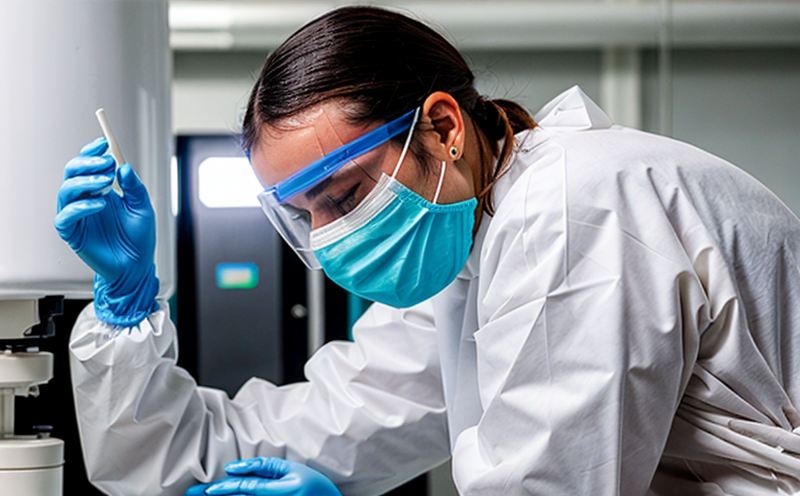EN 62471 Photobiological Risk Group Classification Testing of Luminaires
The European Standard EN 62471-2:2023 provides a comprehensive framework for determining the photobiological safety (PBS) risk group classification of luminaires. This standard is critical in ensuring that lighting products do not pose any undue risks to human health and well-being due to overexposure to light from luminaires.
The testing process under EN 62471 involves the evaluation of various parameters related to photobiological safety, including the spectral power distribution (SPD) of the luminaire, its luminous flux, and its irradiance. These parameters are critical in assessing the potential for retinal damage or other health effects from prolonged exposure.
The standard classifies luminaires into different risk groups based on their potential photobiological hazard. The classification is determined by the maximum permissible exposure level (MPE) to the light emitted by the luminaire, as per ISO 15926-3:2018 and other relevant standards.
The testing procedure involves several steps:
- Spectral Analysis: The luminaire is tested for its spectral power distribution across various wavelengths. This step helps in identifying the specific wavelength ranges that are most likely to pose a photobiological risk.
- Irradiance Measurement: The irradiance of the light emitted by the luminaire at different distances and angles from the luminaire is measured using specialized equipment like photometer or radiometers. This measurement helps in determining the exposure level that individuals might experience.
- Photobiological Hazard Calculation: Based on the spectral power distribution and irradiance, the photobiological hazard index (PI) is calculated for each wavelength range. The PI value indicates the risk associated with a specific luminaire at its maximum permissible exposure.
The final step involves comparing the calculated PI values against the MPE levels specified in EN 62471-2:2023 to determine the photobiological risk group classification. This classification is crucial for ensuring that luminaires comply with safety regulations and can be safely used in various environments.
Understanding this testing process helps quality managers, compliance officers, R&D engineers, and procurement professionals ensure that their products meet regulatory requirements and are safe for public use. Proper photobiological risk group classification also enhances the reputation of manufacturers who prioritize safety standards.
Eurolab Advantages
At Eurolab, we pride ourselves on providing comprehensive lighting testing services that align with international standards such as EN 62471-2:2023. Our team of experts ensures that every step in the photobiological risk group classification process is conducted accurately and efficiently.
- Expertise: Our specialists have extensive experience in lighting testing, allowing us to provide accurate and reliable results.
- State-of-the-Art Equipment: We utilize advanced instruments like high-precision photometers and radiometers to ensure precise measurements of light parameters.
- Comprehensive Reporting: Our reports are detailed and easy to understand, providing clear insights into the photobiological safety of your luminaires.
- Regulatory Compliance: We ensure that all our tests meet or exceed international standards, helping you avoid costly non-compliance issues.
By choosing Eurolab for your EN 62471-2:2023 testing needs, you can trust that we will deliver accurate and reliable results. Our commitment to quality and customer satisfaction ensures that you receive the best possible service in this critical area of lighting safety.
Customer Impact and Satisfaction
The impact of our EN 62471-2:2023 testing services extends far beyond just compliance with standards. By ensuring photobiological safety, we help manufacturers improve the quality and reputation of their products.
- Enhanced Product Safety: Our tests ensure that luminaires are safe for use in various environments, reducing the risk of health issues from overexposure to light.
- Increased Consumer Confidence: By meeting stringent safety standards, manufacturers can build trust with their customers and improve brand loyalty.
- Avoidance of Legal Issues: Compliance with EN 62471 helps avoid potential legal disputes and penalties associated with product non-compliance.
- Better Product Design: Our insights into the photobiological safety of luminaires can guide manufacturers in designing safer products.
Customer satisfaction is at the heart of what we do. We strive to provide services that not only meet but exceed expectations, ensuring that our customers are well-informed and confident about their product's compliance with international standards.
Environmental and Sustainability Contributions
The photobiological safety testing under EN 62471-2:2023 not only ensures the safety of consumers but also contributes positively to environmental sustainability. By ensuring that luminaires are safe for use without posing health risks, we help create a safer living environment.
Luminaires play a crucial role in energy efficiency and sustainability initiatives. By adhering to EN 62471-2:2023, manufacturers can design products that not only comply with safety standards but also contribute to the reduction of light pollution and energy consumption.
Our testing services help manufacturers identify areas for improvement in their product designs, leading to more efficient and safer lighting solutions. This contributes to a healthier planet by reducing unnecessary emissions and promoting responsible use of resources.





